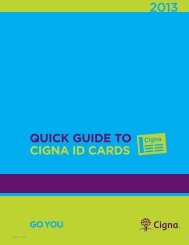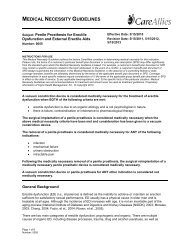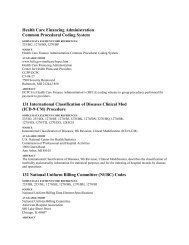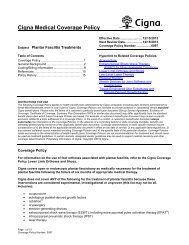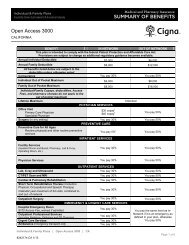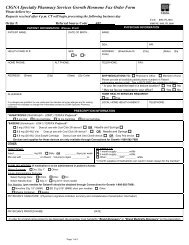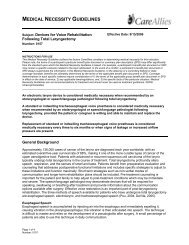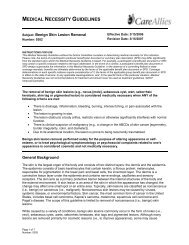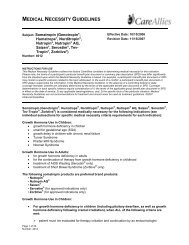Electrical Stimulators - Cigna
Electrical Stimulators - Cigna
Electrical Stimulators - Cigna
You also want an ePaper? Increase the reach of your titles
YUMPU automatically turns print PDFs into web optimized ePapers that Google loves.
velocity, which was sustained at six months. Significantly fewer fear avoidance beliefs were reported in the<br />
CGAE group compared to the non-CGAE group. Comparable reduced pain and function were reported by the<br />
PENS and control-PENS group, whether delivered for five minutes or 30 minutes. Thus, the exact dose of<br />
electrical stimulation needed for analgesia could not be determined. PENS and GCAE were more effective than<br />
PENS alone in reducing fear avoidance beliefs, but not in reducing pain or in improving physical function. There<br />
was a statistically significant improvement in chair rise time in the control-PENS plus CGAE compared to<br />
control-PENS alone. The overall drop-out rate was 8%.<br />
Kang et al. (2007) conducted a single-blinded, randomized study of 63 patients with knee pain secondary to<br />
osteoarthritis. Twenty-eight patients were randomly assigned to the sham group and 35 to the live treatment<br />
group. The study investigated the efficacy of PNT in reducing knee pain and medication consumption during the<br />
first week following treatment. Pain levels were rated on a 100-mm visual analog pain scale. The live group had<br />
greater efficacy than the sham group in all time periods; however, only in the immediate post-treatment period<br />
did it reach statistical significance (p=0.0361). The overall median pain intensity difference over all periods was<br />
14.5 for the live group and 6.5 for the sham group and reached statistical significance (p=0.0071). At one week<br />
follow-up, the live group reported significantly less medication use (p



